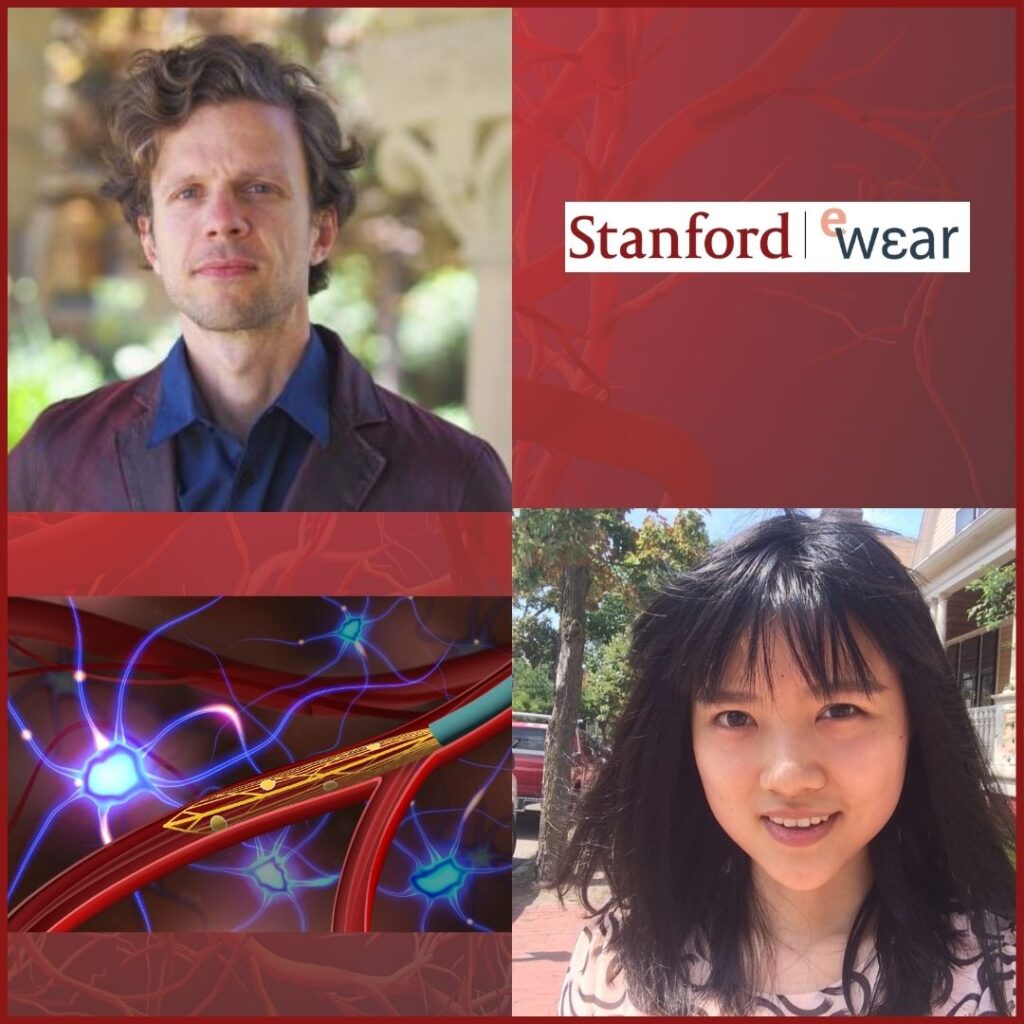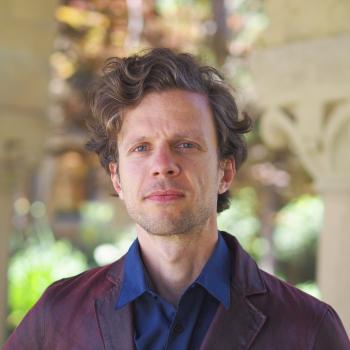
Emerging neurotech and medical uses for AR
We welcome you to join us in-person and on Zoom for our November eWEAR Seminar.
Date: Monday, November 13th from 12:30 pm to 1:30 pm PST
Location: Stanford University (Y2E2 Building, Room 299 parking details below) & on Zoom
Lunch will be provided at 12:00pm for in-person attendees & a chance to talk with the speakers after the seminar.
Registration: Please click here to register
Speakers:
Christoph Leuze, Ph.D.
12:30 pm to 1:00 pm
“Mixed reality applications in medicine and industry”
Anqi Zhang, Ph.D.
1:00 pm to 1:30 pm
“Ultraflexible endovascular probes for brain recording through micrometer-scale vasculature”

Christoph Leuze, Ph.D.
Founder and CEO, Nakamir XR Training, Exec. Director, Stanford Medical Mixed Reality Center
BioDr. Christoph Leuze is director of the Visualization Core at the Stanford Wu Tsai Institute where his research focuses on virtual and augmented reality technologies for medical applications, and founder of Nakamir, a startup creating training and guidance solutions for the factory of the future leveraging Augmented Reality. He taught the first Stanford course on medical mixed reality development and founded the Stanford Medical Mixed Reality program, an institute-wide initiative to bring together academia, clinic and industry to establish and improve mixed reality applications for patient care.
Dr. Leuze has received multiple prizes for his work in Augmented Reality including the IEEE VR People’s choice award for the best AR demo, the TechConnect Award for one of the most promising technological innovations for national security and the prize for the best 3D video at the Ars Electronica Art and Science Festival. Dr. Leuze has studied at Leipzig and Chiba University and received the Otto Hahn medal of the Max Planck Society for his PhD thesis at the Max Planck Institute for Human Cognitive and Brain Sciences in Leipzig.
In this talk I will provide an overview of mixed reality applications in medicine and industry. Depending on the user and the application, mixed reality applications have very different requirements for hardware and software.
Surgeons require highly accurate guidance, students an entertaining and educating experience and factory workers a quick way to lookup complicated procedures. I will detail a few of our use cases and explain our choices for mixed reality hardware and software for the different scenarios.

Anqi Zhang
Postdoctoral Scholar, Chemical Engineering and Bioengineering, Stanford University
BioDr. Anqi Zhang is currently an American Heart Association (AHA) postdoctoral fellow working with Professor Zhenan Bao in the Department of Chemical Engineering and Professor Karl Deisseroth in the Department of Bioengineering at Stanford University. She received her Ph.D. degree under the supervision of Professor Charles M. Lieber in the Department of Chemistry and Chemical Biology at Harvard University in 2020, and her B.S. degree in Materials Chemistry from Fudan University in 2014. She is interested in combining novel chemical, genetic, and electronic tools to monitor and interrogate neural circuits in a minimally invasive manner.
Implantable neuroelectronic interfaces have enabled advances in both fundamental research and treatment of neurological diseases but traditional intracranial depth electrodes require invasive surgery to place and can disrupt neural networks during implantation. I developed an ultrasmall and flexible endovascular neural probe that can be implanted into sub-100-micrometer–scale blood vessels in the brains of rodents without damaging the brain or vasculature. In vivo electrophysiology recording of local field potentials and single-unit spikes have been selectively achieved in the cortex and olfactory bulb. Histology analysis of the tissue interface showed minimal immune response and long-term stability. This platform technology can be readily extended as both research tools and medical devices for the detection and intervention of neurological diseases.
Parking Details
Seminar Location: Y2E2 Building, Room 299 (473 Via Ortega, Stanford, CA 94305, Y2E2 Building)
Garage/Lot Options (click here for more):
Via Ortega Garage: 498 Via Ortega, Stanford, CA 94305 (Map from garage to seminar location enter Y2E2 building by Coupa Cafe)
Rates (click here for more):
Per hour = $4.46
Day pass = $35.68
The following three options are available to pay for parking:
- Download the app and set up a Park Mobile account. It is recommended to do this before coming to campus.
- Use ParkMobile’s Zone parking option: no app download or account needed. You can check out as a guest without setting up an account.
- Simply navigate to app.parkmobile.io/zone/start or text PARK to 77223
- Enter the zone number, and
- Follow the prompts.
- Pay-By-Phone if you don’t have a smartphone or prefer an automated voice system, call ParkMobile at 877.727.5718 to start your parking session.
Safety Protocol: Stanford University Covid-19 Policies. Stanford strongly recommends masking indoors and in crowded outdoor settings.
